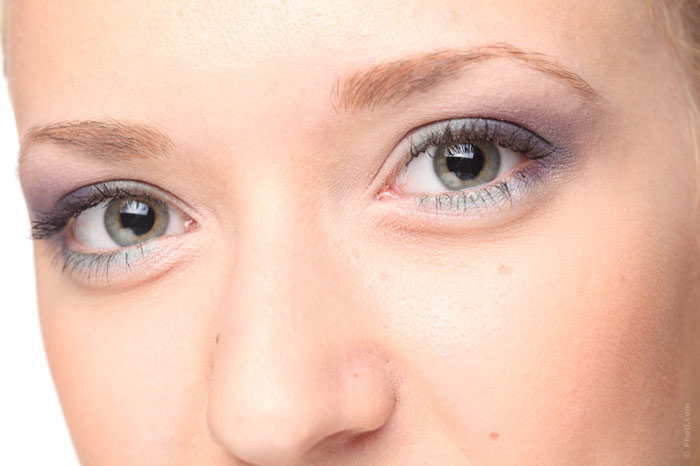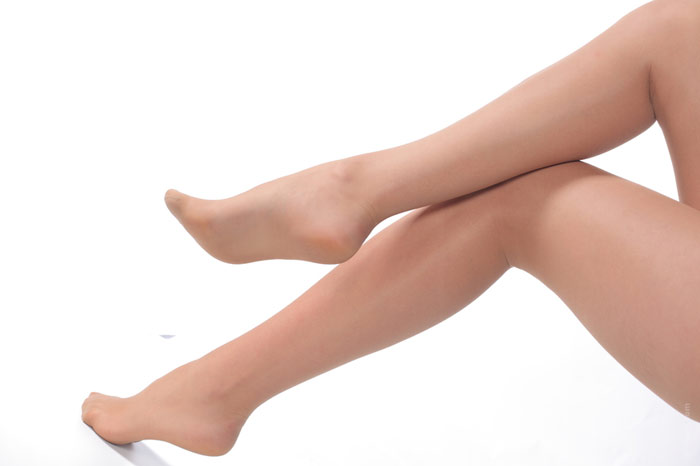When people were engaged in hunting or farming, they spent almost all their time on their feet. But with the advent of television, computers and office work, we have to sit more than ever: 9.3 hours per day. Today, we sit even more than sleep (7.7 hours). But the human body was not created for this purpose, so the negative effects of sedentary lifestyle is clearly felt.

Those who spend more than six hours a day sitting face the probability of death within 15 years 40% more often than those who sit less than three hours a day.
People suffering from obesity sit 2.5 hours a day longer than slim ones. People who have sedentary work are twice as likely to suffer from cardiovascular diseases as compared to those who work standing. Obviously, this is killing us, but how does it happen? When we sit, the body consumes almost no energy.
Once you sit down:
- it reduces to a minimum the electrical activity of the leg muscles;
- calorie consumption is reduced to one calorie per minute;
- the amount of enzymes hydrolyzing fat is decreased by 10 percent;
- after 2 hours, the amount of good cholesterol decreases down to 20 percent.
- after 24 hours, the effectiveness of insulin reduces by 24 percent and the risk of diabetes increases.
All this is true even if you are engaged in fitness.
From 1980 to 2000:
- the time devoted to physical exercise has not changed;
- the total time that a person spends sitting has increased by 8 percent;
- the number of overweight people has become twice greater.
- The studies have shown that the situation can be changed only by reducing the time we spend sitting.
So even if you are working in the office 8 hours a day, use every opportunity to do some exercises:
- step in one place;
- jump;
- take a walk around the office;
- do some stretching exercises.
Those who sit in front of their TV set three or more hours per day will die from heart disease with a 64% probability.
- Each additional hour of watching TV increases the risk of death by 11 percent.
- It does not matter whether you are sitting at a desk or driving a car. Try to walk more, ride a bike, and use stairs instead of the elevator. Get up from the chair at every opportunity.
What body systems suffer most from the fact of our sitting?
1. Cardiovascular system

To ensure that the work at the computer does not contribute to your personal heart problems, you should have a little test. Take a break for a moment from the monitor and see how you are sitting at the table. Are your shoulders slightly raised? Are your neck and neck muscles tense? Is your head tilted forward or sideways?
This posture, especially if you stay in it for a long time, leads to stagnation in the vertebral arteries and impairs the blood supply to the brain. This leads to headaches, loss of memory, fatigue and increased pressure. It can also develop cardialgia (heart pain) and arrhythmia (irregular heartbeat) due to prolonged compression of the intercostal nerves.
What to do?
First of all, change your posture more often and control the muscle tension, or relax. Install some reminder on your computer and check how you sit every 10-15 minutes: whether the back is not strained, whether you do not raise the shoulders and do not experience fatigue in your hands.
If you feel tension, move on a chair, shake your hands, clench your fingers and relax them, or just shrug your shoulders.
2. Vision. Dry eye syndrome

Its symptoms include redness, dryness, and the feeling of sand in the eyes. It appears due to staying in the room with computers and air conditioners for a long time. If you do not start to treat the disease in time and if you do not see a doctor, you may even need a surgery.
What to do?
Remember that an artificial image on the monitor is a blurred image. Your eyes perceive it as a flaw and are trying to fix it, feeling the tension all the time. To relieve them of this tension, it is desirable to take a short break for 10 minutes after every 45 minutes of computer work.
Exercises for training eye muscles are the best way to help relieve tension.
3. Carpal tunnel
This syndrome is also referred to as “tunnel syndrome.” It arises in the people working at a PC for a long time because of the constant load on the median nerve. Its symptoms are numbness in one of the fingers and convulsions. Previously, 80% of the patients used to get rid of the syndrome after the surgical dissection of the transverse carpal ligament.
What to do?
The best way to deal with the computer mouse illness is massaging the area of the elbow joint. If this does not help, the problem is chronic, and you need to see a specialist, who will solve the problem with an injection.
4. The digestive system. Gastritis and gastric ulcer

The stomach of an office worker has three main enemies: cold food, low-quality coffee from a vending machine, and stress. By the way, chronic stress is the cause of many psychosomatic diseases, including gastric and duodenal ulcers.
Equally often, these reasons lead to developing functional disorders of other organs of digestion: biliary dyskinesia, reactive processes in pancreas, intestinal colitis.
What to do?
First of all, there should be a balanced diet! To create an optimal menu, you can contact a dietitian. In case of pain, gastroenterologists advise to undergo a comprehensive diagnosis and treatment.
5. Hemorrhoids
Proctologists claim that about 70% of the people will sooner or later face this problem. And those who are forced to sit for a long time will suffer even more. Hemorrhoids is the scourge of office workers.
6. Inflammation of the pelvic organs
Sedentary work, along with driving and long sexual abstinence, causes stagnation of blood in the pelvis. This often leads to inflammatory diseases of the female and male genital and other pelvic organs.
What to do?
To find time for the gym, swimming pool, jogging and gymnastics.
7. Chronic fatigue syndrome

Until recently, a CFS has not been taken seriously. But today it takes epidemic proportions. And office workers are leaders in this respect.
Two thirds of them are women who complain of exhaustion after a minimal effort, of constant pain in the joints and muscles and extreme weakness. It is believed that this is the disease of the immune and nervous systems.
What to do?
- First of all, try to find out whether you have a lack of iodine in the body. If so, then you need to adjust the diet.
- Methods of alternative medicine, such as acupuncture, hirudotherapy (leeches), and phytotherapy, can help fight fatigue.
- Aromatherapy is an excellent remedy. Citrus aromas of lemon, mandarin, and grapefruit help increase efficiency.
- A bath with a few drops of basil or lavender oil leads to good relaxation.
8. Sensitivity to electromagnetic fields
Monitors, telephones and other office equipment are a powerful source of electromagnetic radiation. The people who are sensitive to its effects usually complain of skin irritation, fatigue, and headache. Very often, they are not even aware of the reasons for their ill health.
What to do?
Keep some distance. It is better to locate the appliances at the distance not less than 1-1.5 m from you. All devices, including your PC, must be grounded. It is better to use regular phones with cable: cordless phones can cause severe high-frequency fields and especially harmful pulsating fields.
9. Osteochondropathy

Those who are forced to sit for long periods of time in the workplace experience dull back pain, numbness in the neck and other unpleasant symptoms. This may cause and later develop spine curvature, and your back will start to ache. According to doctors, the majority of people older than 30 years have cracked intervertebral discs.
What to do?
If you do not have time for the gym, you can do isometric exercises. They are based on a strong short-term muscle tension without stretching.
Exercises in case of neck problems:
- standing against the wall, push it with the back of your head for 3-5 seconds, then relax the muscles;
- sitting at the table, lean with your chin on the hands bent at elbows and press down on them while
- trying to tilt your head or turn it aside;
- do not do more than 4-5 turns during one session.
Exercises for thoracic segment:
- sitting on a chair, push the shoulder blades and your lower back against the back of the chair;
- holding on to the seat, try to lift yourself with a chair;
- while sitting, put your elbows on the table and put pressure on it;
- while standing, touch the wall with your back, alternately pushing it with your buttocks, lower back, or shoulder blades.
If you have problems in the lumbar spine:
- lying on a flat surface with legs bent at the knees, push it with your back;
- a more complex version of this exercise would be to strain the muscles of the buttocks and perineum
- while pushing the surface with your lower back.
In case of exacerbation, stress duration should not exceed 2-3 seconds. Then you can increase it to 5-7 seconds.
10. Varicose veins, thrombosis

It is only couriers, whose legs are constantly strained, who face the risk of varicose veins more often than office workers. When you are sitting, your veins suffer from being squeezed rather than from overload.
Phlebologists warn that sitting with one leg on the other one is a true way to varicose veins and thrombosis. The latter, as we know, is dangerous because it forms blood clots deep in the veins, and they can migrate to any organ of the body – the heart, lungs, or brain. This may eventually cause heart attack, stroke or sudden death.
What to do?
When having varicose veins and a venous network on the legs, you can stop the disease and help your legs look aesthetic again due to sclerotherapy. During this procedure, the medicine that is injected in small venous vessels scleroses them. As a result, the blood flow stops in them and they eventually “get dissolved”.
Below are some videos on how some office workers try to move more while still working in front of a computer.










